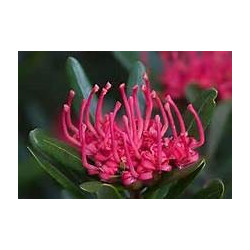-
Vegetables
- Edible Flowers
- Alfalfa
- Asparagus
- Artichoke
- Asian Stirfry Mix
- Beans
- Beetroot
- Carrot
- Capsicum
- Cape Gooseberry
- Cornsalad
- Chicory
- Cress
- Dahlia
- Gourds
- Endive
- Hops
- Kiwi Fruit
- Lettuce
- Iceplant
- Liquorice
- Pak Choi
- Melon
- Viola
- Swede
- Spinach
- GilliFlower
- Lemongrass
- Tomatillo
- Radicchio
- Celtuce
- Mache
- Choy Sum
- Pumpkin
- Hon Tsai Tai
- Kailaan
- Kang Kong
- Lemonbalm
- Taisai
- Quinoa
- Wom bock
- Perilla / Shiso
- Raab
- Shungiku
- Broccoli
- Cabbage
- Bok Choy
- Borage
- Burdock
- Brussel Sprouts
- Cauliflower
- Celeriac
- Calendula
- Collards
- Celery
- Chilli
- Chia
- Corn
- Cucumber
- Daikon
- Eggplant
- Rocket
- Garlic
- Hauzontle
- Kale
- Kohl Rabi
- Leek
- Luffa
- Marigold
- Marubah Santoh
- Miners Lettuce
- Nasturtium
- New Guinea Bean
- Mibuna
- Minutina
- Mitsuba
- Mizuna
- Mustard Greens
- Okra
- Onion
- Passionfruit
- Parsnip
- Purslane
- Pea
- Pokeberry
- Radish
- Rhubarb
- Rosella
- Salsify
- Silverbeet
- Sorrel
- Spaghetti
- Stevia
- Squash
- Sweet Potato
- Tatsoi
- Turnip
- Vitamin Greens
- Tomatoes
- Sunflower
- Zucchinni
-
Herbs
- Fennel
- Sage
- Coriander
- Selfheal
- Amaranth
- Chia
- Camomile
- Vervain
- Basil
- Agrimony
- Oregano
- Wormwood
- Caraway
- Ajowan
- Marjoram
- Soapwort
- Lemonbalm
- Angelica
- Lovage
- Savory
- Thyme
- Arnica
- Celtuce
- Pyrethrum
- Catmint
- Comfrey
- Chives
- Purslane
- Mint
- Chinese Milkvetch
- Cumin
- Lady's Mantle
- Poppy
- Dandelion
- Ginko
- Lady's Bedstraw
- Nasturtium
- Echinacea
- Perilla / Shiso
- Evening Primrose
- Calendula
- Dill
- Sorrel
- Chervil
- Lavender
- Horehound
- Tarragon
- Cardiospermum
- Bergamot
- Melilot
- Mallow
- Blessed Thistle
- Hops
- Marigold
- Stevia
- Pennyroyal
- Anise
- Mullein
- Plantain
- Hyssop
- Parsley
- Nigella
- Rue
- Edible Flowers
-
Microgreens and Baby Leaf
- Amaranth
- Basil
- Beet
- Broccoli
- Cabbage
- Carrot
- Celery
- Chervil
- Chives
- Coriander
- Cress
- Dill
- Fennel
- Kale
- Kohlrabi
- Lemon Balm
- Lettuce
- Mache
- Tarragon
- Mint
- Mizuna
- Mustard
- Orach
- Oregano
- Pak Choi
- Parsley
- Radish
- Rocket
- Rosemary
- Sage
- Salad Burnett
- Shiso
- Sorrel
- Savory
- Tatsoi
- Thyme
- Watercress
- Melons
- Snow Pea
- Corn
- Sunflower
- Dandelion
- Parsnip
- Green Manure
- Tomatoes
- For My Cat
Waratah
Waratah (Telopea) is an endemic, Australian genus of five species of large shrubs or small trees, native to the southeastern parts of Australia (New South Wales, Victoria and Tasmania). The most well-known species in this genus is Telopea speciosissima, which has bright red flowers and is the NSW state emblem. The waratah is a member of the plant family Proteaceae, a family of flowering plants distributed in the Southern Hemisphere. The key diagnostic feature of Proteaceae is the inflorescence, which is often very large, brightly coloured and showy, consisting of many small flowers densely packed into a compact head or spike. Species of waratah boast such inflorescences ranging from 6–15 cm in diameter with a basal ring of coloured bracts. The leaves are spirally arranged, 10–20 cm long and 2–3 cm broad with entire or serrated margins. The name waratah comes from the Eora Aboriginal people, the original inhabitants of the Sydney area.
The genus Telopea is belongs to the plant family Proteaceae. Within the Proteaceae, their closest relatives appear to be the genera Alloxylon (Tree Waratahs), Oreocallis and Embothrium, a group of generally terminal red-flowering plants that skirt the southern edges of the Pacific Rim. Together they make up the subtribe Embothriinae. The genus was first described by Robert Brown in 1810 from the type species Telopea speciosissima. There are five species of plant within the genus, all of which readily hybridize in cultivation.[There are two main branches, with one being the species pair of T. speciosissima and T. aspera, with the other lineage giving rise to T. truncata first, then T. oreades and T. mongaensis.[The speciosissima-aspera lineage (clade) has two synapomorphies—distinguishing common characteristics presumed not present in ancestors—leaves with toothed margins, and large red involucral bracts. The truncata-oreades-mongaensis lineage has flowers that open from the centre to the edge of the inflorescence (basitonic) rather than the reverse (acrotonic), which is a feature of the speciosissima-aspera clade and more distant relatives.
For some time the waratah has had a reputation as difficult plant. It has a complex culture and for many years there have been cases of people trying to establish the plant only to have the attempt fail. Failures can usually be attributed to the effects of unsuitable soil conditions, aspect or climate. The waratah is also a slow plant to mature with a flowering period that is short, unpredictable and unreliable. Early issues with cultivation meant that approximately 90% of all waratahs sold at Sydney’s Flemington markets in the early 90s were bush picked. Some progress has been made in the 20 years since then with several cultivars being commercially grown mostly in areas to the North and South of Sydney and in the Dandenong Ranges in Victoria. Issues with cultivation are still present however

There are 2 products.
Showing 1-2 of 2 item(s)


